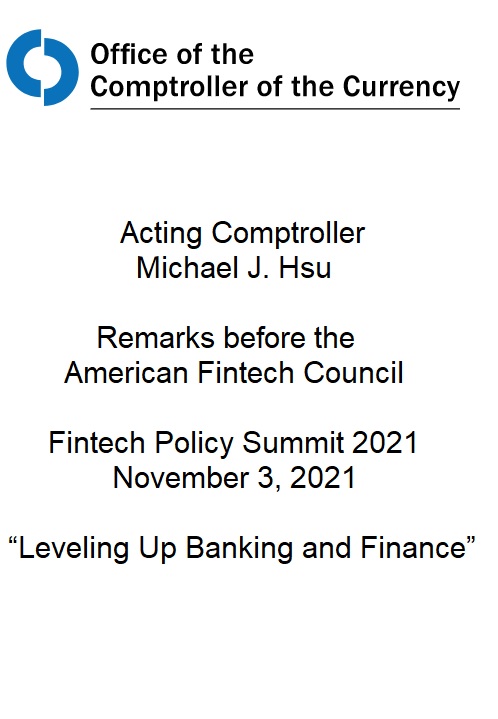
Noe Compliance Sanctions AML Services – As you plan your training, remediation, enhancements, and validations for 2022 please consider using Noe Compliance for:
- Sanctions Screening Validations
- AML Rule Validations
- Sampling Methodology
- Model Management
- Sanctions Filter Tuning
- Regulatory Remediation Projects (OFAC, OCC, FRB, HKMA, MAS, SARB, etc.)
- Sanctions Screening Algo Enhancements
🔥 🚩A multi-part 🔍analysis of #OFACs recent settlement with TD Bank🔥 🚩. The series of short 1 minute videos analyzes the settlement details, prevention methods to avoid these scenarios, and lessons learned. (Below is Episode 1 of 8.) Note: Link to other videos in Comments.
🔥 🚩Are you familiar with the TD Bank OFAC settlement from December?🔥 🚩 I have prepared a series of short videos that analyze the settlement details, prevention methods to avoid these scenarios, and lessons learned. (Below is Episode 1 of 8.)
🎧 🎬 To Watch The Video 🎬 🎧
If you prefer to watch this at your leisure, feel free to follow Noe Compliance on 🎵 TikTok: https://www.tiktok.com/@noecompliance or refer to the comments for links to the rest of the 🎬videos.
💥Part 1💥: Details of the Settlement pertaining to the Narcotics Kingpin. The SDN was able to open her account and evade detection for multiple years as a result of human error.
💥Part 2💥: Episodes 2, 3 and 4 cover “Questions that Come to Mind” where I analyze various aspects and provide insights on how you can prevent these at your institution using resources you already have. Episode 2 focuses on preventing the human error that led to improper closure of sanctions alerts over 4 years.
💥Part 3 Focuses on💥 earlier detection of human error (i.e. monitoring controls at the analyst level) to improper handling of high quality matches that are likely true matches or at least worthy of escalation.
💥Part 4 Focuses on💥 creating detection of unexpected account changes (i.e. Account level controls) to immediately detect inadvertent systemically triggered re-opening of blocked accounts.
💥Part 5 Focuses on💥 Updates to your training curriculum that will help you 👀prevent👀 falling victim to the same human/analyst errors that led to TD Bank’s OFAC settlement.
💥Part 6 Focuses on💥 Sanctions Screening Filters and why it is important to 👀test👀 your screening filters on a continuous basis and ensure you are able to detect the same scenarios mentioned in OFAC settlement letters. And, 🚩Yes,🚩 SDNs do modify their name to evade detection.
💥Part 7 Focuses on💥 👀SDNs having US addresses.👀 In fact, there are 😱73😱 entries on the OFAC list with a US address📍. Of those US addresses, half are in FL. And, you guessed it, of those Florida addresses, most are located in 🚩Miami, FL.🚩 Coincidentally the same location as the bank named in this OFAC settlement.😜
💥Part 8 Focuses on💥 using free tools such as a 👀Risk Bow Tie Analysis👀 to identify 😱blind-spots and vulnerabilities😱 within your compliance program. By identifying all of the 🚩risks/pitfalls🚩 your program must avoid, and then mapping out potential causes, controls, mitigants, and post-facto remediation requirements you will be able to minimize reputational risks (and penalties) to your institution as well as create a best-in-class program that will be complimented by your regulators.
❤️🌈 I would love your feedback on the video! 🌈❤️
Please like and follow for more content!!
#OFAC #AML #SANCTIONS #SanctionsTechTalks #NoeCompliance #OFACSettlementAnalysis #Narcotics #Kingpins #HumanErrorPrevention #TerroristFunding #Crypto #CryptoCurrency #tiktok
Heightened Technical Expectations of US Regulators
By: Crystal Noe

Previously, technology was seen as a means to an end in the world of compliance. But, as noted by the Office of the Comptroller of the Currency (OCC) Acting Comptroller, Michael J. Hsu, the convergence of compliance, regulations, and technology is necessary. This aligns with the U.S. Department of the Treasury / OFAC‘s recent guidance on compliance officers having technical expertise.
On November 16, 2021, Hsu wrote “I have found that there are very few people who are fluent in banking and finance, technology and coding, and supervision and regulation. And yet, the optimal outcome likely requires taking the best attributes of each world and synthesizing them to enable a modern, safe, sound, and fair financial system.” (From the recent OCC article: “Modernizing the Financial Regulatory Perimeter”.)
If you analyze #SettlementLetters / Fines / C&Ds/ etc. more-often-than-not the compliance lapse(s) was been rooted in failure to properly understand, implement, validate or apply technology in a manner commensurate with the company’s risk profile or regulatory guidelines for responsible innovation. And, if we are honest with ourselves, most compliance officers gloss over the rich technical details contained in settlement letters as it doesn’t strike a chord with them (its not their lingo) and most engineers don’t read regulatory pieces because its out of their wheelhouse.
The time has come to expand compliance skills/staff to include a fundamental understanding and appreciation for the technology, engineering and data that compliance officers rely on each day to fulfill their compliance obligations. (And vice-versa.)
Keep in mind, HKMA and MAS have made similar moves to become more technically versed in compliance systems and data.
Keywords:
compliance officer, compliance, banking, technology, finance, OCC, compliance technology, compliance technology risk, anti money laundering, compliance, banks, Payments, OCC, FDIC, regulatory compliance, PEPs, Politically Exposed Persons, NGO risk, ATM, Automated Teller Machine Operators, AML, BSA, Exam Manual, Audit, FFIEC, regulatory reporting, Regulators, Customer Risk, Unintended Risk Bias In Compliance, information technology, PEP Screening, Crystal Noe Knows Compliance, auditors, audit, bank audit, AML compliance, AML Audit, AML Policies, FIBA , FIBA, ACAMS, CRYPTO, NFTS, VASPS
Link to OCC document: https://lnkd.in/dY8gp_nS